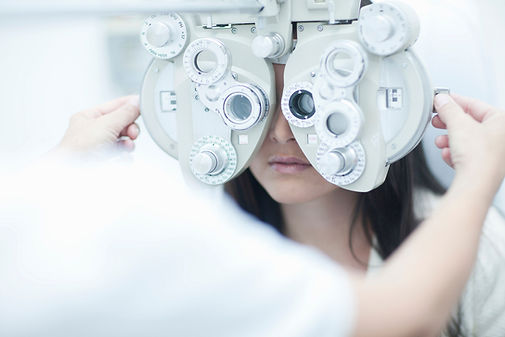Clinical Practice of An Orthoptist
There are relatively very few Certified Orthoptists (CO) in practice in the United States, with numbers ranging under 400 in the entire country. While this specialty is small, their impact on patient care is significant. Many a child with a potentially blinding condition called amblyopia will have regained vision due to the involvement of an orthoptist. Additionally, adults with double vision and eye alignment disorders (strabismus) will frequently be assessed by a Certified Orthoptist, who will assist the physician in guiding both non-surgical and surgical interventions.
The practice of orthoptics is multi-fold. Clinical orthoptics may be practiced in a variety of physical locations including hospitals, clinics, private offices and academic medical institutions. COs treat many non-surgical disorders of ocular motility and binocular vision and also help the ophthalmologist with the surgical planning of strabismus surgery. Some COs assist the ophthalmologist in the operating room.
Patients may be referred for a sensorimotor evaluation from within the practice or from the medical community for assessment of amblyopia, pre- and post-operative strabismus, and complaints relating to binocular function. Orthoptists may also conduct and publish clinical research, and they commonly participate in the education of medical students, residents, and orthoptic students.
Support of FOREA will help promote this profession and improve access to patients by in need of the specialized services provided by an orthoptist.
Many areas do not have an orthoptist. This can make it extremely difficult for patients to get the appropriate care they need for their strabismus or amblyopia. Please consider supporting the foundation today by providing a onetime or recurring donation to FOREA. Your donation will support the education and training of new students going into the field of orthoptics and help fill the void in underserved areas.

What is an Orthoptist?
An Orthoptist is a healthcare professional on an ophthalmologist-led eye care team who specializes in the diagnosis and treatment of disorders related to eye movements, binocular vision, and visual function. They work with patients of all ages, from infants to the elderly who may have issues with eye alignment (strabismus), eye movement control, amblyopia (lazy eye), or other conditions affecting visual function like double vision. Orthoptists are not medical doctors, but rather allied healthcare professionals who function under the direction of their supervising physician as the mid-level provider in the office. Orthoptists are primarily found in a pediatric and / or neuro-ophthalmology clinic. Orthoptists’ educational background is extensive, and therefore they have high levels of clinical responsibility and complex diagnostic and therapeutic skills. They work closely with ophthalmologists to help manage patients with eye diseases or conditions that require more advanced treatment. Overall, the role of the orthoptist is to help patients improve their visual function and quality of life by addressing issues related to eye movements and binocular vision.
Education of the Orthoptist
Orthoptic training programs are modeled after ophthalmology residencies and pediatric ophthalmology fellowships. Their training includes a college graduate-level educational curriculum that covers a broad range of subjects including anatomy, neurology, sensory and motor physiology, and ocular pharmacology. Over the two years of their highly specialized training, an orthoptist will also see over a thousand patients in a clinical setting to reinforce their classroom education. Lastly, their education will also involve clinical research with many students presenting at national meetings.
The American Orthoptic Council (AOC) establishes the requirements for education in Orthoptics, accredits teaching programs able to meet those requirements, examines and certifies candidates who complete training, sets continuing education goals for periodic recertification, and oversees the ethical aspects of orthoptic practice in the United States. The AOC consists of representatives of the American Academy of Ophthalmology, the American Association for Pediatric Ophthalmology and Strabismus, the American Association of Certified Orthoptists, the American Ophthalmological Society, and the Canadian Orthoptic Council.
Most AOC-accredited Orthoptic Programs are affiliated with ACGME-accredited medical schools in the United States. A baccalaureate degree is required for entrance into an orthoptic program. Orthoptic students must complete a 24-month program of study in an accredited Orthoptic Program and successfully pass both a written and an oral/practical board examination given by the AOC in order to obtain national certification. The certificate issued by the Council signifies that the Certified Orthoptist has successfully completed the training and examination process, has met the standards for certification, and is ethically and otherwise in good standing. Orthoptists must re-certify every three years, showing proof of continuing education that includes attendance at scientific meetings.
Certified Orthoptists (CO) are recognized by the American Medical Association and work similarly to a Physician’s Assistant or Nurse Practitioner alongside ophthalmologists. Orthoptists are eligible for membership into the American Association of Certified Orthoptists, the American Association for Pediatric Ophthalmology and Strabismus, the American Academy of Pediatrics, and other various ophthalmology organizations.





